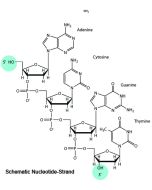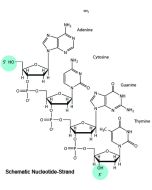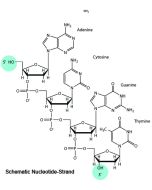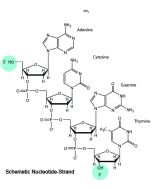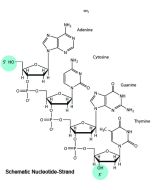Cookie Policy: This site uses cookies to improve your experience. You can find out more about our use of cookies in our Privacy Policy. By continuing to browse this site you agree to our use of cookies.
Innaxon
ODN 1668 (Type B) Endotoxin-free (sterile)

| Product Details | |
|---|---|
| Synonyms | CpG ODN TLR9 Agonist: B Type (species: rodent) |
| Product Type | Chemical |
| Properties | |
| MW | 6,383g/mol |
| Sequence |
5'-tccatgacgttcctgatgct-3' (lower case letters: phosphorothioate linkage: nuclease resistant). |
| Reconstitution | For a 100μM stock solution, dissolve total vial content in 1570μl (1mg size) or 157μl (100μg size) sterile endotoxin-free water or PBS. |
| Formulation | Lyophilized. Sterile. |
| Biological Activity |
Optimal concentration is dependent upon cell type, species, desired activation and analysis: in vitro 0.1-1μM (~0.6-6.0μg/ml); in vivo 50-250μg in rodent animal models. |
| Crossreactivity |
Mouse Rat |
| Specificity |
Mouse, Rat |
| Endotoxin Content | <0.002EU/μg |
| Declaration | Manufactured by Innaxon. |
| Other Product Data |
Contains: 100μg size includes 1.5ml ddWater Endotoxin-free (sterile) (Cat. No.: IAX-900-002-LD15). 1mg and 3 x 1mg sizes each include 10ml ddWater Endotoxin-free (sterile) (Cat. No.: IAX-900-002-L010). |
| Shipping and Handling | |
| Shipping | AMBIENT |
| Short Term Storage | +4°C |
| Long Term Storage | +4°C |
| Handling Advice |
Avoid freeze/thaw cycles. After reconstitution, prepare aliquots and keep aqueous stock solutions for 1 day at 4°C or store at -20°C (shelf-life 6 months). |
| Use/Stability | Stable for at least 2 years after receipt when stored at +4°C. |
| Documents | |
| MSDS |
 Download PDF Download PDF |
| Product Specification Sheet | |
| Datasheet |
 Download PDF Download PDF |
Unmethylated CG dinucleotides within particular sequence contexts are responsible for the immunostimulatory activity of bacterial DNA. Synthetic oligonucleotides (ODN) that contain such CpG motifs (CpG ODNs) mimic microbial DNA. The innate immune system of vertebrates has the ability to recognize CpG motifs in microbial DNA via the Toll-like receptor (TLR) 9 if the CpG ODN were free of additional immune stimulatory contaminants often present in synthetic commercial CpG ODN preparations designed for molecular biology applications (i.e. PCR). Given that high quality CpG ODNs were used [i.e. endotoxin-free], a close link has been established between the expression of TLR9 on certain immune cell subsets and the modulation of the immune system by CpG DNA. Different types of CpG ODNs were identified based on their differing biological effects on different cell types: ODN Type A is a potent inducer of IFN-α in human PDC, (i.e. ODN 1585 or 2216) leading to antigen presenting cell (APC) maturation, whereas ODN Type B (i.e. ODN 2006 or ODN 1668 / ODN 1826) is a weak inducer of IFN-α but rather stimulates IL-8 production and increasing costimulatory and Ag-presenting molecules and triggers proliferation of B-cells and IgM and IL-6 production. A third type of CpG ODN has been identified, termed ODN Type C, with both high induction of INF-α in PDC and activation of B-cells. The sequence of CpG Type C (also called K) (i.e. ODN 2395 or M362) combines elements of both Type A and Type B and contains a central palindromic sequence with CG dinucleotides, a characteristic feature of Type A, and a TCGTCG motif at the 5' end, present in Type B CpG ODNs. Although the CpG motifs are thought to differ between mice and humans, in both species the recognition of CpG ODNs is mediated by TLR9. The optimal CpG motif in humans is GTCGTT and GACGTT for the murine sequence. However, recent evidence suggests that this sequence specificity is restricted to phosphorothioate (PS)-modified ODN and is not observed when a natural phosphodiester backbone is used. In recent years sequence requirements, specificity, signaling pathways and kinetics of the TLR9 suppression by inhibitory ODNs (iODNs) have been investigated.
- Comparison of different CpG oligodeoxynucleotide classes for their capability to stimulate human NK cells: S. Sivori, et al.; Eur. J. Immunol. 36, 961 (2006)
- Innate immune responses induced by classes of CpG oligodeoxynucleotides in ovine lymph node and blood mononuclear cells: J.S. Booth, et al.; Vet. Immunol. Immunopathol. 115, 24 (2007)
- Impact of class A, B and C CpG-oligodeoxynucleotides on in vitro activation of innate immune cells in human immunodeficiency virus-1 infected individuals: J.A. Martinson, et al.; Immunology 120, 526 (2007)
- Three CpG oligodeoxynucleotide classes differentially enhance antigen-specific humoral and cellular immune responses in mice: Y. Liu, et al.; Vaccine 29, 5778 (2011)
- Toll-like receptor and IL-12 signaling control susceptibility to contact hypersensitivity: S.F. Martin, et al.; J. Exp. Med. 205, 2151 (2008)
- The Novel Toll-Like Receptor 2 Agonist SUP3 Enhances Antigen Presentation and T Cell Activation by Dendritic Cells: X. Guo, et al.; Front. Immunol. 8, 158 (2017)
- p38α has an important role in antigen cross-presentation by dendritic cells: Y. Zhou, et al.; Cell. Mol. Immunol. 15, 246 (2018)
- Absence of GdX/UBL4A protects against inflammatory diseases by regulating NF-кB signaling in macrophages and dendritic cells: C. Liu, et al.; Theranostics 9, 1369 (2019)






